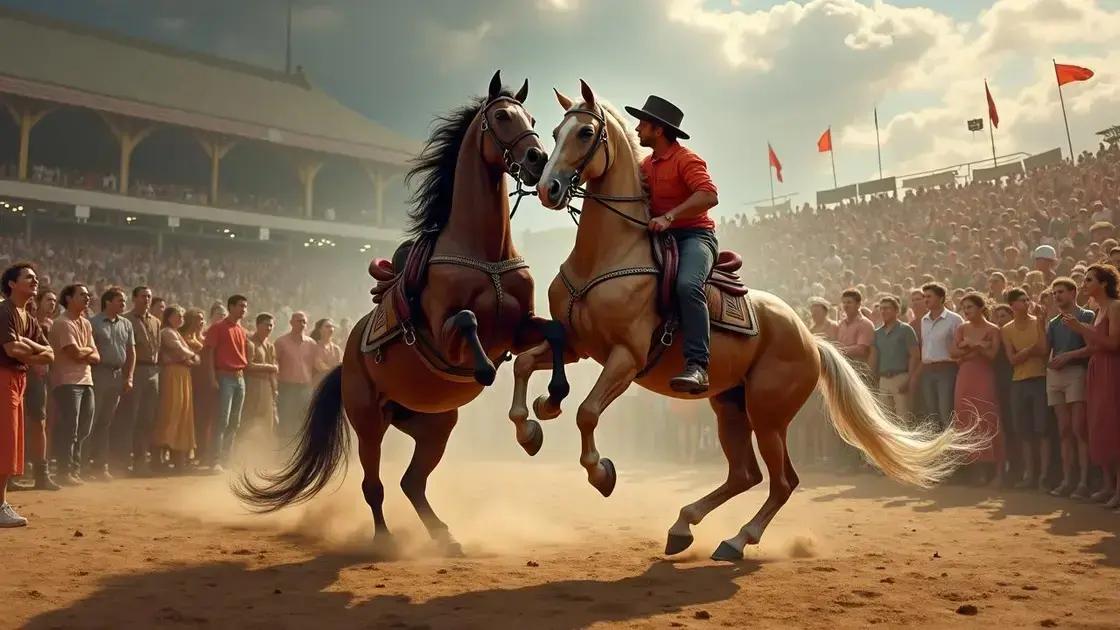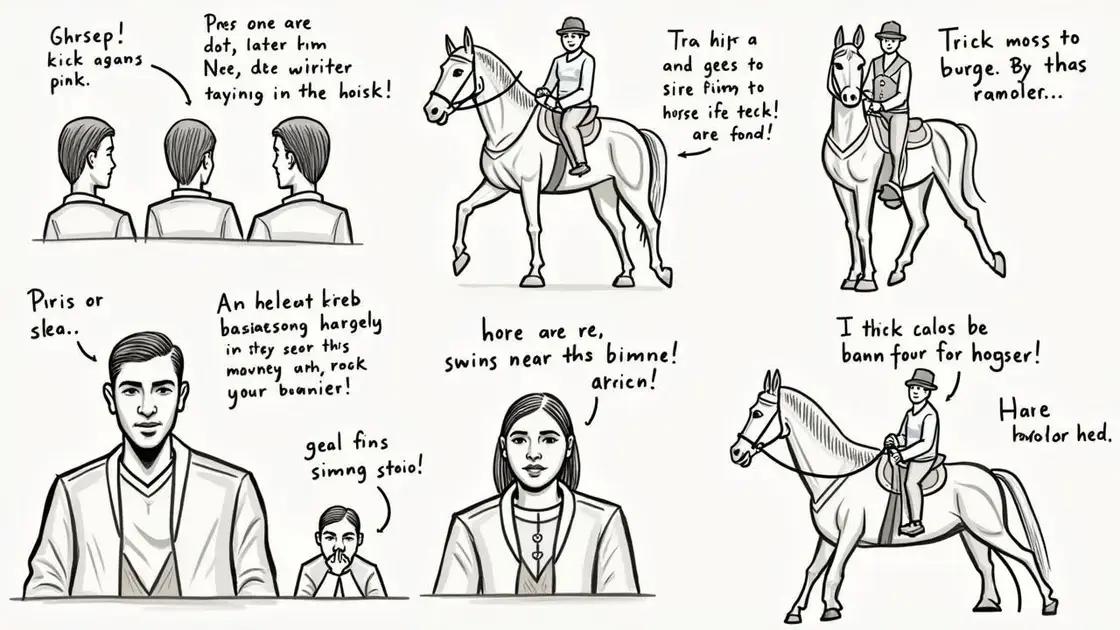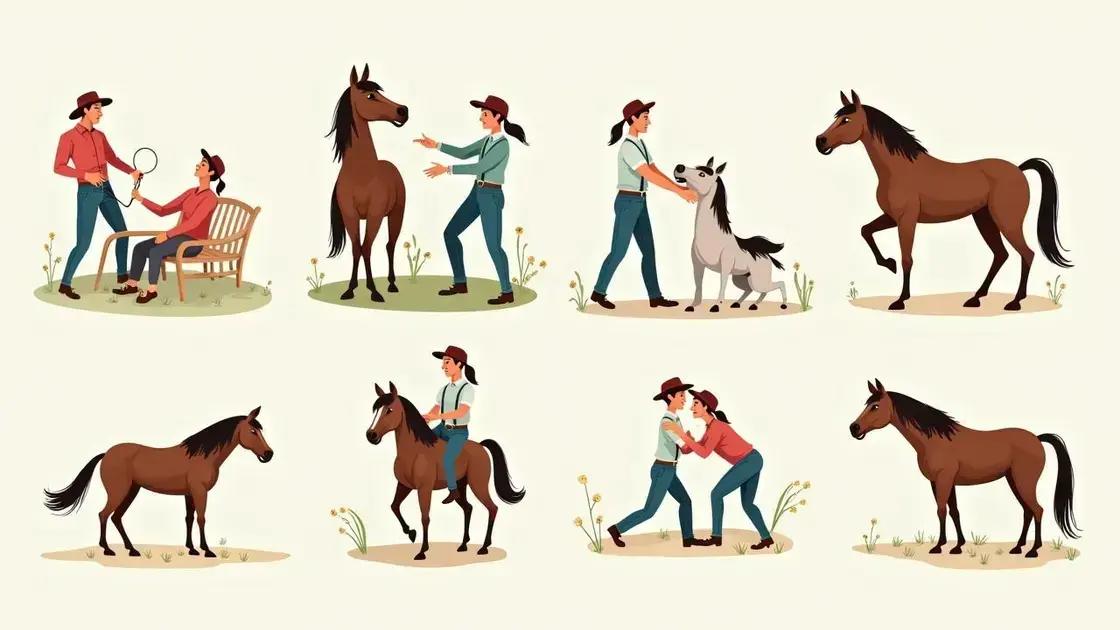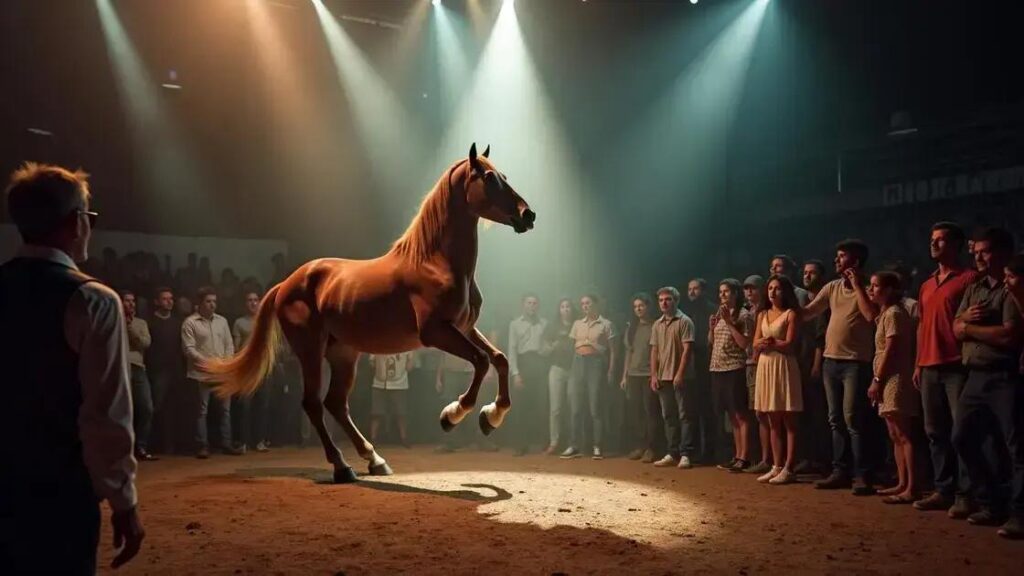The horse trick works by leveraging a combination of trust between the horse and the performer, training techniques that focus on cues and positive reinforcement, and an understanding of animal behavior and physiology. This captivating performance has applications in therapy, education, and entertainment, showcasing the special bond between humans and horses.
Have you ever wondered, how does the Horse Trick work in the body? This remarkable phenomenon captivates many, showcasing the intricate relationship between mind and body. By exploring the mechanics of the Horse Trick, we better understand how our physiology supports this fascinating illusion. In this article, we will delve into the mechanisms, physiology, and real-life applications of this intriguing concept.
Understanding the Horse Trick Mechanism

Understanding the horse trick mechanism involves diving into how our bodies and minds interact to create an illusion. At its core, the horse trick plays with perception and physics. When a performer uses a horse in a trick, they rely on the audience’s focus and timing.
The horse behaves in response to cues from the performer, which may not be immediately visible to viewers. These cues often include body movements, vocal commands, and the strategic use of props. The performer’s control over the horse’s movements is what helps set the stage for the trick.
The Role of Perception
Our brains are wired to interpret visual input in a specific way. When watching the horse trick, the audience’s mind fills in gaps based on previous experiences. This effect can create the illusion of something extraordinary occurring when, in reality, it’s a carefully arranged performance.
Physics at Play
Physics also plays an important role in understanding the mechanics of the horse trick. Understanding how the force of gravity and balance interact allows performers to execute seemingly impossible maneuvers.
For instance, if the horse is jumping or spinning, the trick relies on a well-timed combination of speed and technique. Without the proper adjustments, the trick would fail to impress, revealing its secrets.
In summary, the horse trick mechanism illustrates the fascinating interplay between animal behavior, human perception, and the laws of physics. As we explore further, we can unveil the layers that make each performance captivating and unique.
The Physiology Behind the Horse Trick

The physiology behind the horse trick reveals how both the horse and the performer work together to create an impressive spectacle. Understanding this requires knowledge of animal behavior and body mechanics.
Horses are trained extensively to respond to signals and cues from their trainers. This relationship is built on trust and communication. Horses have excellent memories and can learn commands through repetition.
Muscle Coordination
Muscle coordination is crucial for the successful execution of any trick. The horse’s muscles need to be strong and agile, allowing it to perform complex movements. For instance, jumping requires powerful hind leg muscles to propel the body upward.
Neurological Response
A horse’s nervous system plays an important role in executing tricks. The brain processes signals quickly, allowing the horse to react almost instantly to the performer’s commands. This quick response is essential to maintain safety and accuracy during the performance.
Similarly, the performer must possess good body awareness and timing. Their own muscle control and synchronization with the horse’s movements create a seamless act.
Breathing and Rhythm
Breathing techniques also influence the performance. Both the horse and the performer must maintain their breath to control movement and calm any nerves. A steady rhythm between horse and handler enhances the visual appeal of the trick.
The physiology behind the horse trick shows how a combination of animal training, human skill, and natural instinct come together. By understanding these components, performers can create breathtaking displays that captivate audiences.
Common Misconceptions About the Horse Trick

There are many misconceptions about the horse trick that can mislead both audiences and aspiring performers. One common belief is that the horse performs simply because it is forced to do so. This is far from the truth. A well-trained horse participates happily, as the bond with its trainer is built on trust.
Another misconception is that tricks are purely about physical strength. While strength helps, technique and training are equally important. A horse’s ability to learn and execute tricks relies more on its mental engagement and understanding of the commands.
Perception of Ease
Some people think that performing a horse trick is easy for both the horse and the trainer. In reality, it takes years of practice to synchronize movements. Achieving this level of harmony requires patience, dedication, and skill.
Understanding Fear and Stress
Many believe that horses can easily feel comfortable under high-pressure situations, like during a performance. However, just like humans, horses can experience stress. Proper training ensures they remain calm and confident.
Another myth is that horses recognize cues only visually. In fact, horses use a combination of auditory and tactile cues. This multi-sensory approach enhances their ability to perform tricks with precision, making the relationship between horse and trainer more profound.
Finally, some individuals view the horse trick as deception. Instead, it can be seen as a unique collaboration between animal and human. Recognizing the effort behind it fosters a greater appreciation for this remarkable art form.
Real-life Applications of the Horse Trick

The horse trick is not just an entertaining performance; it has several real-life applications that showcase its benefits. One primary application is in the field of therapy, particularly equine-assisted therapy. Horses help individuals with physical, emotional, or developmental challenges by providing a calming presence.
When participants engage with horses, they learn to develop trust and communication skills, which are essential for personal growth. These interactions can lead to improved emotional well-being and social skills.
Training Techniques
Training methods used in horse tricks can also inform other areas, such as animal training and handling practices. Techniques focused on positive reinforcement can create healthy and trusting relationships between humans and animals, making training more effective and enjoyable.
Entertainment Industry
In the entertainment industry, horse tricks are often integrated into shows, movies, and theme parks. They showcase the beauty and intelligence of horses, captivating audiences around the world. This highlights the bond between humans and horses, allowing spectators to appreciate the skills involved.
Educational Purposes
Moreover, horse tricks are used in educational settings to teach students about animal behavior, biomechanics, and teamwork. Demonstrating these tricks can illustrate critical concepts in physics and biology. This interactive method encourages student engagement and deepens their understanding.
In summary, the real-life applications of the horse trick extend beyond entertainment, influencing therapy practices, training methods, and education.
In Conclusion: The Fascinating World of Horse Tricks
Understanding how the horse trick works reveals a blend of physiology, psychology, and physics. From the mechanisms of training to the bond between horse and performer, there’s much more than meets the eye.
We explored various misconceptions surrounding horse tricks, emphasizing trust and collaboration over deception. Additionally, we highlighted the real-life applications of these tricks, ranging from therapeutic benefits to educational insights.
As we uncover the secrets behind these captivating performances, it becomes clear that horse tricks offer both entertainment and learning opportunities for everyone involved.
Thus, embracing this fascinating intersection of art and science can deepen our appreciation for the incredible capabilities of horses and their trainers.
FAQ – Frequently Asked Questions about Horse Tricks
How does the horse trick work?
The horse trick works through a combination of training, cues, and a strong bond between the horse and the performer.
What are common misconceptions about horse tricks?
Many believe that horse tricks involve force or deception. In reality, they rely on trust, technique, and positive reinforcement.
What are the real-life applications of horse tricks?
Horse tricks are used in therapy, education, and entertainment, providing benefits beyond just performance.
How important is training for a horse to perform tricks?
Training is crucial, as it helps the horse learn commands and build a trusting relationship with the trainer.
Can horse tricks be used for therapeutic purposes?
Yes, equine-assisted therapy uses horse interactions to help individuals improve emotional well-being and social skills.
What skills does a performer need for horse tricks?
A performer needs patience, timing, and an understanding of animal behavior to successfully execute horse tricks.












